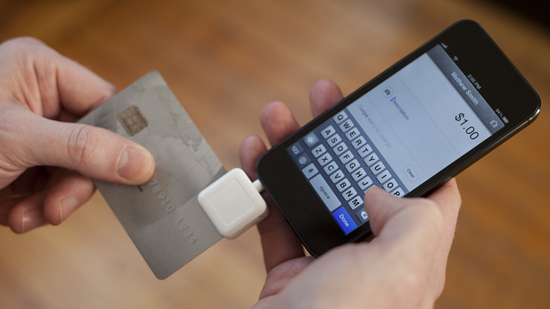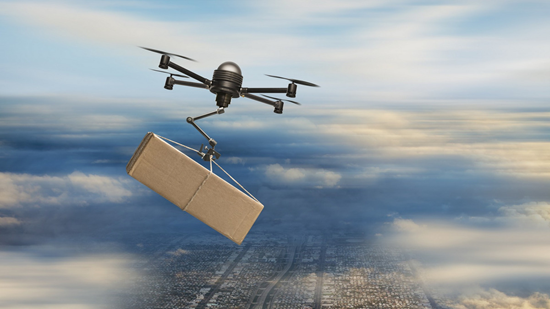
Technology advances not so much when it exhibits innovation, but when it becomes truly practical for everyday people. 2015 saw a lot of that as voice assistants started to show how they could live in the home and in mobile devices, always listening for their names, and super computers got to work on language translation and cancer cures.
In 2016, we’ll see an acceleration of that shift of technologies from the drawing board and geek-only curiosities to consumer devices that change our lives in ways small and big. Here are a handful of technologies that are on the cusp of major action in the coming year.
See also: 7 tech trends that will rule CES 2016
1. Artificial Intelligence
Image: Corbis
For decades, artificial intelligence was a thing best understood by sci-fi fanatics and screenwriters. Regular people simply didn’t encounter it in any tangible way. That started to change in 2011 with Apple’s Siri voice assistant, but 2015 turned out to be a watershed year for computer algorithms that could ape human thought and interaction.
In 2016, products like Apple's Siri, Google Now, Amazon's Alexa and Microsoft's Cortana will continue their steady march into our lives, especially as tech companies begin to connect the dots between the smart home and office, mobile devices and these always-listening assistants. Soon we’ll all be programming our coffee makers with voice commands and getting love advice from our phones.
Simultaneously, the most powerful of these artificial minds (think IBM’s Watson and its cognitive computing mind - which can make a mean barbeque sauce) will try their hands at helping world leaders solve intractable problems. These artificial minds won't offer assistance by delivering nonsense technobabble advice, but by literally listening to world chatter on social media, analyzing the data and returning concrete information and forward-looking intel that humans might not be able to synthesize on their own.
2. Advanced materials
Image: Corbis
Sure, it’s what’s on the inside that counts, but people will always react to the outside because it’s what they can see and feel. That’s why material sciences are so important to the world of technology. Advancement in this area will, in addition to many other things, define the next generation of home entertainment and mobile devices.
Areas to watch in 2016 include recyclable thermoplastics, which are essentially super-strong plastics - the kind used in smartphone bodies - that can be broken down by another active agent (possibly acid). They could start showing up in high-end phones this year and may help redefine their look and feel.
There will also be more display advancements, especially in the glass covering the display as Corning is surely prepping its next edition of super-hard yet pliable Gorilla Glass and Japanese competitors work on what may eventually be a Gorilla rival.
And the nearly mythical material known as graphene (an atom thick and incredibly strong and conductive, pictured above) may move into the practical application zone as researchers have finally figured out how to make it far more cheaply than before. Is 2016 the year we see the first graphene-based CPU?
3. Smart objects
Image: TongRo Images, Corbis
This year, people will spend less time talking about “The Internet of Things” and “Smart Homes” and focus on “Smart Objects,” every-day products that now have a little bit of data-gathering and connectivity built in. These objects will connect to Wi-Fi and Bluetooth - directly to your smartphone through a hub - but will look no different than dumb objects. This is by no means a new trend, but intelligence will start to pop up in unexpected places like placemats, table cloths, coffee cups, door handles, doormats, lawn sprinklers, office chairs and more.
Most will simple tell you when they’re being used, for how long and at what time of the day. You’ll use this information to adjust your own habits and to track the activities of others (think an office situation).
Essentially, these smart objects will focus on helping you quantify your lives. What you do with all that information is up to you.
4. Robotics
Image: Digital Art, Corbis
As long as movies like Star Wars: The Force Awakens exist, we will be forever disappointed by our robots. The chasm between fantasy and reality is simply too big.
For the realists among us, though, 2016 will bring some positive advancement as promised home and family robots like Jibo finally arrive and more advanced humanoids like Pepper begin dotting global corporate offices and show rooms. At the same time, toy, STEM, telepresence, and home appliance robots will continue to sell reasonably well in 2016.
Sadly, C3PO and BB-8 (no, not the awesome, but still limited BB-8 by Sphero, I mean the real one) are still years, if not decades, away.
5. Virtual Reality
Image: George Logan, Corbis
2016 should be virtual reality’s biggest test. Millions of consumers spent the holidays unboxing their first VR headset. Most, I’m guessing, were probably both awed and maybe a little disappointed. The content that exists is compelling, but it remains limited.
This year, Oculus Rift will finally arrive and with it will come what might best be called “Next-Level VR Story-telling.” Imagine not only experiencing rich VR content, but also becoming part of the story. Instead of IMAX, it’s You-MAX; an immersive screen of content wherever you look and characters that are not only aware you’re there, but react to your “physical presence.”
This level of virtual reality will remain prohibitively expensive throughout 2016, but there will be many people throwing Oculus VR parties in 2016. Just pray you get an invite.
6. Bio-Security
Image: Science Photo Library, Corbis
In 2015, we saw more than a few attempts at biometric security, including the finally useful fingerprint recognition found on Apple and Android smartphones and tablets, the disappointing Myris and gesture-based security. The best of the bunch, though, was the facial recognition software and hardware found in many Windows 10-based systems.
Windows Hello won’t work without Intel’s Real3Dcamera, but when it does work, it’s flawless. Expect many more Hello-enabled computers this year and other tech companies switching from forgettable password-based systems to similar and other biometric security systems.
7. Mobile Payments
Image: Leigh Righton, Corbis
Mobile payments systems have achieved a sort of ubiquity without anything near ubiquitous use. As one expert told me in 2015, the mobile payment universe is still a very small pie. 2016, though, will be the year of the chip. Take a look at the credit card your bank just sent you. It has a chip in it and retailers around the world are switching to chip systems. The difference will be that you no longer swipe your card and instead insert it into a point-of-sale slot (Europeans are very familiar with this system).
This doesn’t help or hurt mobile payment systems like Apple Pay, Android Pay or Samsung Pay, but may slow down adoption as people find a new and, perhaps, even more convenient way to use their credit cards.
8. Drones
Image: John Lund, Blend Images, Corbis
Drone registration will probably slow down the consumer drone market a bit this year, but make no mistake, 2016 will still be filled with drone advancements. There will be drones big enough to carry people (this might also be a real "hoverboard") and a lot more indoor toy drones.
Drone deliveries should begin in earnest before the end of the year, though recent mishaps with commercial filming drones could result in more consumer pushback than Amazon and, perhaps, Walmart are expecting.
9. Hoverboards V2
2015 didn’t end so well for "hoverboards." Sure, these two-wheel personal mobility devices sold extremely well, but there were countless reports of fires and injuries.
Still, people love to ride them and by holiday time this year we’ll see a new generation of Swagways and other riders with certified batteries, “Made-in-America” stickers and optional handles (the big innovation!).









No comments:
Post a Comment
Please adhere to proper blog etiquette when posting your comments. This blog owner will exercise his absolution discretion in allowing or rejecting any comments that are deemed seditious, defamatory, libelous, racist, vulgar, insulting, and other remarks that exhibit similar characteristics. If you insist on using anonymous comments, please write your name or other IDs at the end of your message.